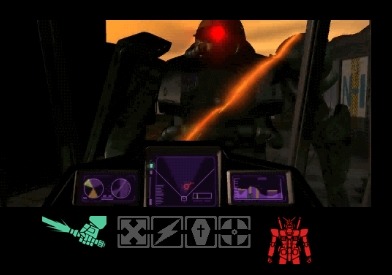

For example, Amuro is already a member of the Federation military at the time of the initial Zeon attack on Side 7, and the main characters in the Federation serve on the White Base-class ships Pegasus and Pegasus II rather than the Pegasus-class White Base. Along with this adaptation came several major changes to the story. The novels, issued as a series of three books, allowed him to depict his story in a more sophisticated, adult, and detailed fashion.

In 1979, before the end of the anime, Yoshiyuki Tomino himself created the first novelizations of the original Gundam anime series. Tomino still held a grudge 10 years after the show aired and stated in an interview in Newtype 1989 April issue that the imaginary enemies of Gundam are Sunrise, sponsors and television stations. Director Tomino showed great disgust in the color change, also noticing the unrealistic non-aerodynamic design of it after the show was on air, said in an interview that such design would never appear in the real world, since it would be a sitting duck from fighter aircraft. It was intended to be in a more realistic black color, but was changed to white by the order of Sunrise, similar to the color change of the main mecha Gundam was changed from a grayish white to white, red, blue and yellow. The idea of having a space carrier from Tomino is partly inspired by the earlier science fiction anime Space Battleship Yamato, in which he claimed to be a fan of. The White Base, the mothership of the protagonist crew members, is designed with a 3 plane view method by Kunio Okawara, however, it is not specially designed for the anime series Gundam, it was actually a salvaged design from the anime Invincible Steel Man Daitarn 3. Originally, the anime would be called 'Gunboy' but it was renamed Mobile Suit Gundam. Tomino liked Okawara's work and asked him to collaborate with him in his upcoming project. And over the next four parts of this podcast miniseries, we’ll continue through to the end of the series.Tomino met mechanical designer Kunio Okawara when he first worked in two television series from Sunrise. This week, we go into the history of bothGundam itself and the Mecha genre at large, before diving into the first 2 episodes of the anime, one of the most confident and compelling introductions we’ve ever seen to a TV series.

In the 40 years since its 1979 debut in Japan, Mobile Suit Gundam has grown into one of the most pervasive and beloved franchises in anime history – and this summer, we’re taking a look back at the series that started it all, by watching, reviewing, and discussing in depth all 43 episodes of the original Mobile Suit Gundam (aka Gundam 0079). Sean has been a big Gundam fan for years, but Jonathan’s never seen a single episode before, giving us two unique perspectives on the series as we set out on this journey.


 0 kommentar(er)
0 kommentar(er)
